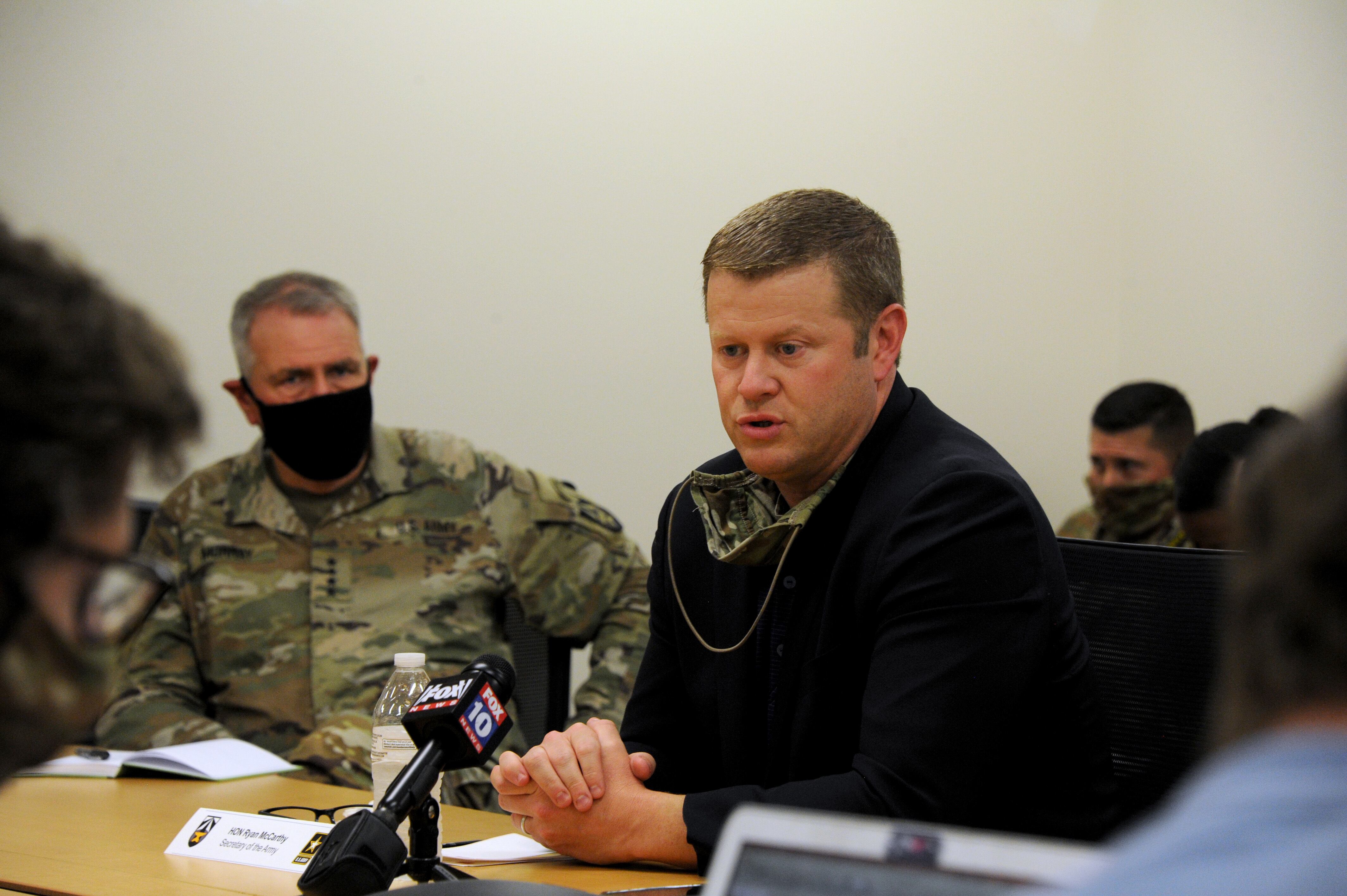WASHINGTON — Army leaders are growing concerned the service won’t be able to continue to protect its priority programs and key enabling capabilities in the upcoming budget, especially as military officials and national security observers expect the Army’s overall budget could shrink in fiscal 2022.
Some programs considered critical to the future are already “on the edge of viability,” Lt. Gen. James Pasquarette, the Army G-8 who is in charge of equipping, said May 13 at the McAleese and Associates conference.
The Army has wrapped its arms tightly around a set of 35 priority modernization programs to include efforts in Long Range Precision Fires, Next-Generation Combat Vehicles, the network and Future Vertical Lift while at the same time bracing for future budget cuts.
And it has identified another 30 systems, not among the top priority programs, but those that are considered key enablers because without them the top modernization programs won’t reach their full potential, Pasquarette explained. He said the service has roughly $24 billion invested in key enablers.
One example is the Q-53 radar, which is needed in order for the Army’s future Extended Range Cannon Artillery (ERCA) system to see out to targets at its 70 kilometer range. Without a capable radar, the ERCA would not reach its full potential.
Army Futures Command Commander Gen. Mike Murray said at the same conference May 12 that upcoming budgets may cause the Army to make hard choices about those sacred programs and that they are “almost impossible choices to make.”
Pasquarette said that of the roughly $35 billion inside the equipping portfolio he manages, 47 percent of the funding is allocated to advance the top 35 modernization priorities plus the 30 other key enablers. The other 53 percent is everything else, which covers roughly 500 other programs.
In the next five years, the priority programs will be funded closer to 50 percent, he added.
“We are scheduled to deliver the 31 plus four next-generation capabilities on a schedule that’s aggressive, but necessary, given what our adversaries are doing in trying to keep pace with us. We have to have these on schedule,” Pasquarette said.
“Right now they are resourced to deliver,” he added. “I think [if] we start to accept some risks, we won’t be comfortable with the key enablers.”
The other 500 or so programs not considered a priority have been reduced to a point where further cuts “are very concerning,” Pasquarette said.
RELATED

The Army has already spent the last three years internally shifting funds to modernization programs — through a process called night court — that are expected to make a difference in the future and align with the National Defense Strategy and the Army’s warfighting concept and vision.
Pasquarette said, at this point, there isn’t much that can be moved elsewhere. “Those legacy, enduring [programs] are in a very precarious position,” he said, while remaining essential capabilities that the Army cannot operate without.
“They are sometimes called the ‘unloved,” Pasquarette said. “We’ve taken shwacks out three years in a row in some instances and they are not sexy. They’re not a hypersonic missile that flies thousands of kilometers and can strike a 10 digit grid.
“But without those capabilities I’m talking about, we fail,” he said.
The Army, should it see deeper budget cuts, would have to choose between reducing or eliminating the programs that get less love but are needed or delay the delivery of priority programs, Pasquarette explained.
On top of difficult decisions looming when it comes to priority modernization efforts, the Army Chief of Staff Gen. James McConville has already said many times this year that he plans to freeze end-strength at 485,000 in the active force even though the justification for growing the force is there.
“This is where priorities come in,” McConville said at the conference.
“When it comes to readiness,” he said, “you have a sacred obligation to send troops to combat that are ready. And, you know we’re not going to sacrifice the readiness of our troops.”
The White House is preparing to release its FY22 budget request May 27.
Jen Judson is an award-winning journalist covering land warfare for Defense News. She has also worked for Politico and Inside Defense. She holds a Master of Science degree in journalism from Boston University and a Bachelor of Arts degree from Kenyon College.








